What's New
Displaying results 1651 - 1660 of 4052

Resource | Publications,
An unprecedented period of change and opportunity is under way in Myanmar. But too many children have yet to feel the benefits. Ending the long-running conflicts and intercommunal violence that have plagued the country for decades – and tackling the issues of self-governance, resource-sharing and ethnic identity that have perpetuated them – is a key stated ambition of the Government of the National League for Democracy that took office just over a year ago.
Political, social and economic reforms initiated in 2010 are starting to impact on the lives of the children who make up approximately 34 per cent of the country’s estimated 53 million population.
This Child Alert focuses on the situation of children whose lives and prospects are effectively on hold.
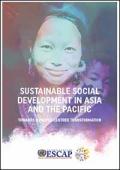
Resource | Publications,
To address the mounting social and environmental costs of economic growth, as well as the persistent and growing inequalities, the 2030 Agenda for Sustainable Development pledged to leave no one behind. Asia-Pacific countries should be in a strong position to achieve the transformational 2030 Agenda and its Sustainable Development Goals (SDGs) by 2030, but only if they reset their priorities to ensure that everyone shares the fruits of economic growth equally.
This report summarizes the social development gaps and sketches out a broad regional agenda for a people-centred transformation, including some of the key priorities and resources needed. Policy simulations reported here clearly indicate that acceleration of economic growth alone will not address the remaining development gaps. Instead, development strategies need to ensure that economic growth leads to more decent jobs, broadened coverage of social protection, including universal education and health care. This will be critical not only for eliminating extreme poverty and achieving other SDGs, but also for creating more cohesive societies.
Harnessing the potential of its people, Asia and the Pacific can be at the forefront of a global social transformation for a prosperous, inclusive and sustainable future for all.
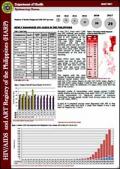
Resource | Fact Sheets,
In May 2017, there were 1,098 new HIV antibody sero-positive individuals reported to the HIV/AIDS & ART Registry of the Philippines (HARP). This was 48% higher as compared with the same reporting period last year (741) and also the highest recorded cases ever since 1984. Eightyseven percent of those were asymptomatic at the time of reporting.
Most (95%) were male. The median age was 28 years old (age range: 2 year-67 years). More than half were from the 25-34 year age group while 30% were youth aged 15-24 years.
A total of 8 pregnant women were diagnosed with HIV in May 2017. 3 cases were from NCR, 2 cases from Region 3 and 1 case each for Regions 4A, 7 and 9.
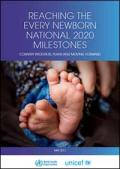
Resource | Publications,
This WHO and UNICEF report details the country leadership and actions that are taking forward the goals and recommendations set out in the Every Newborn Action Plan – an initiative contributing towards the goals of the Global Strategy for Women’s, Children’s and Adolescents’ Health for Every Woman Every Child. In 2016, 51 countries completed the Every Newborn Tracking Tool, which tracks progress. This report presents the findings of the progress tracking tool, spotlights activities in a range of countries and exemplifies some of the partner efforts to support country progress.

Resource | Publications,
In 2015, UNAIDS introduced accelerated targets in the global response to HIV. Targets were reaffirmed by the 2016 UN Political Declaration on HIV and AIDS. Unabated HIV epidemics worldwide among gay, bisexual men and other men who have sex with men threaten to undermine gains made to date in reaching global HIV targets unless addressed with targeted, evidence-based, and human rights-affirming interventions at scale.
The Global Forum on MSM & HIV (MSMGF), together with the Joint United Nations Programme on HIV/AIDS (with representatives from UNAIDS Secretariat, UNDP, UNFPA, the World Bank, and WHO), established an advocacy platform composed of community members, activists, researchers, and representatives from donor agencies and multilateral institutions to fast track HIV and human rights responses among gay, bisexual and other men who have sex with men.
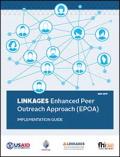
Resource | Guidelines,
This guide introduces the enhanced peer outreach approach, which engages previously unidentified members of key populations for HIV prevention and testing, particularly those who are hard to reach and who may be at high risk or already have HIV. This guide describes the approach, its potential benefits and the steps involved in implementing it.
LINKAGES also developed the Enhanced Peer Outreach Approach Training Curriculum for Peer Outreach Workers. This training curriculum complements the implementation guide by offering a detailed curriculum for training peer outreach workers in how to use the approach.
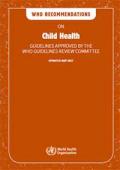
Resource | Guidelines,
The objective of this document is to make available WHO recommendations on child health in one easy-to-access document for WHO staff, policy-makers, programme managers, and health professionals. The compilation can also help better define gaps to prioritize guideline updates.
WHO produces guidelines according to the highest international standards for guideline development. The main principles are transparency and minimizing bias in every step of the process. The process of developing guidelines is documented in WHO Handbook for guideline development. The development process includes the synthesis and assessment of the quality of evidence, and is based on the Grading of Recommendations, Assessment, Development and Evaluation (GRADE) approach.
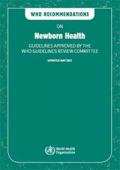
Resource | Guidelines,
The objective of this document is to make available WHO recommendations on newborn health in one easy-to-access document for WHO staff, policy-makers, programme managers, and health professionals. The compilation can also help better define gaps to prioritize guideline updates.
WHO produces guidelines according to the highest international standards for guideline development. The main principles are transparency and minimizing bias in every step of the process. The process of developing guidelines is documented in WHO Handbook for guideline development. The development process includes the synthesis and assessment of the quality of evidence, and is based on the Grading of Recommendations, Assessment, Development and Evaluation (GRADE) approach.
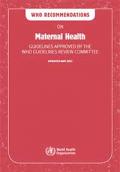
Resource | Guidelines,
The objective of this document is to make available WHO recommendations on maternal health in one easy-to-access document for WHO staff, policy-makers, programme managers, and health professionals. The compilation can also help better define gaps to prioritize guideline updates.
WHO produces guidelines according to the highest international standards for guideline development. The main principles are transparency and minimizing bias in every step of the process. The process of developing guidelines is documented in WHO Handbook for guideline development. The development process includes the synthesis and assessment of the quality of evidence, and is based on the Grading of Recommendations, Assessment, Development and Evaluation (GRADE) approach.
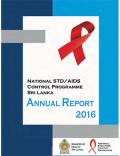
Resource | Publications,
During 2016, a total of 249 HIV cases were newly reported in Sri Lanka. This is the highest number reported in a year since the identification of the first HIV infected Sri Lankan in 1987 and this amounts to about 21 persons newly reported with HIV for a month. However, the reported numbers represent only a fraction of HIV infected people in the country as many infected persons may perhaps not be aware of their HIV status and in addition, stigma and discrimination towards HIV hinder seeking HIV testing services.





